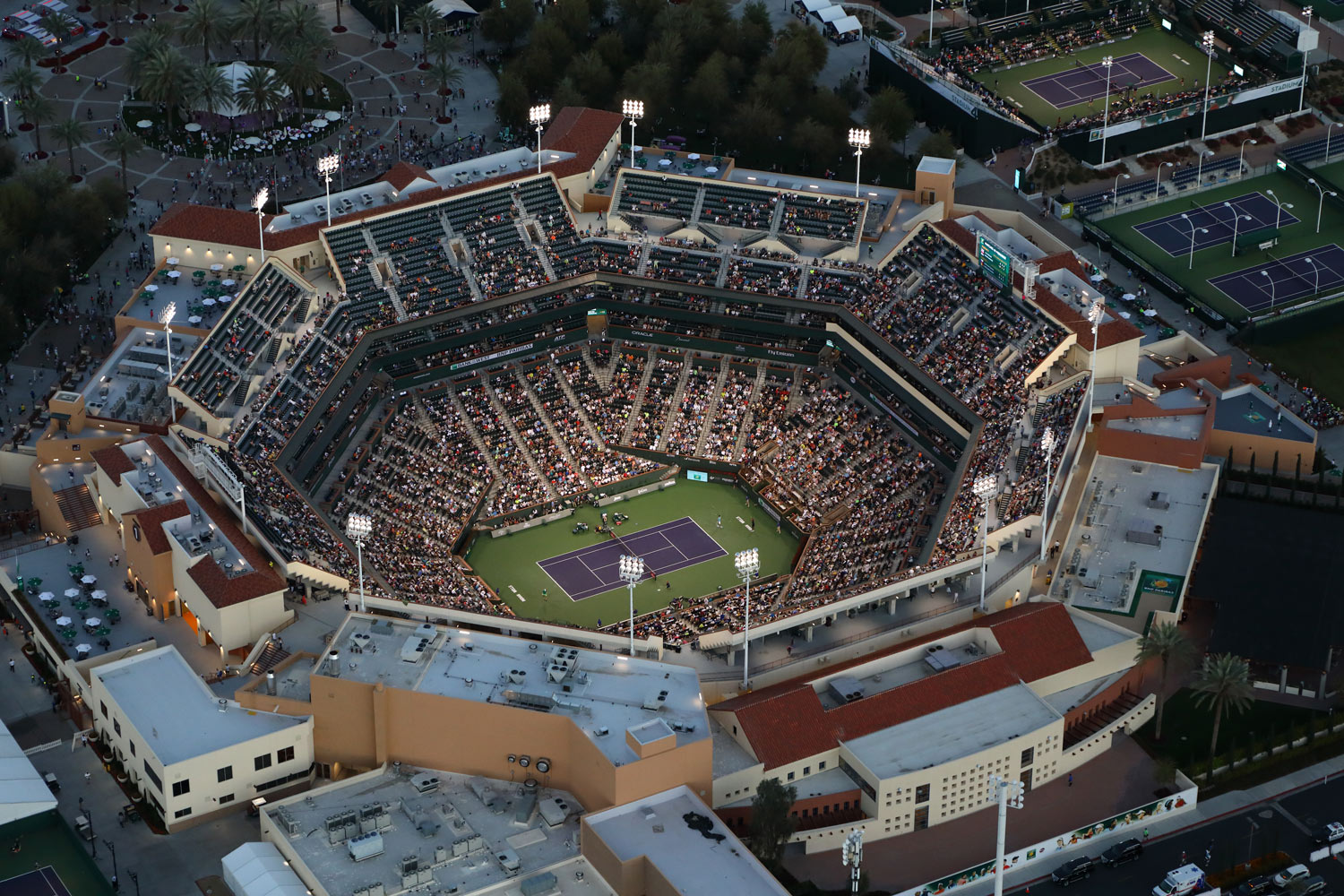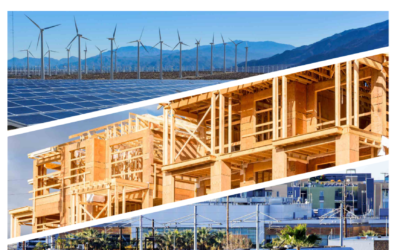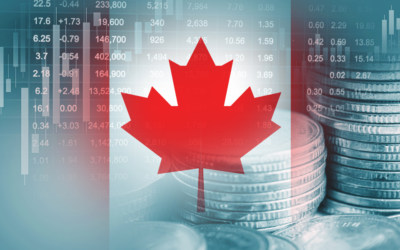This year’s BNP Paribas Open is different from any that came before it. Of course, the tournament never had to contend with a pandemic or the number of tennis greats who are currently sidelined with injuries. But even though it is being held much later in the year than usual, and the faces on the court are a bit different than the customary stars, having the “Grand Slam of the West” return to Indian Wells Tennis Garden represents a welcome return to something more normal for the desert.
“The last actual event took place in 2019 and we had 475,000 in overall attendance,” said Rolf Hoehn, Director of Business Development and Partnerships at Desert Champions, LLC, which manages the tournament. The tournament management team was all set to keep the momentum building in 2020. “We wanted to capitalize on the momentum,” said Hoehn, “and keep elevating the experience for our patrons.” And that’s when the pandemic struck. Without anyone knowing the danger and the scope of COVID-19 early in 2020, the tournament was on tenterhooks. Ultimately, “We had to cancel the night before the beginning of the tournament,” added Hoehn.
After a long wait and a lot of hard work, the 2021 tournament was able to get the two weeks of October 4 – 17 on the calendar. “We have had a much shorter runway to the tournament than we normally have, so we will not be able to replicate the outcomes we had in 2019, in terms of attendance, given all of the circumstances right now,” Hoehn said, “We have everything the same, but on a smaller scale. Limiting something here and there, but not to the extent a patron would notice, because our objective is still the same: to provide a great overall experience, not just a tennis tournament to our fans.”
The key to putting on a financially responsible tournament at a non-customary time of the year, “was working with the governing bodies of professional tennis to find a date that would work for both the men’s and women’s tours,” said Matt Van Tuinen, Media Relations Director. “And that took quite a long time and energy to do. But we determined that we wanted to do a tournament and both tours were very supportive. As a result, we’re creating an opportunity for the athletes. If you look at it in terms of the opportunity to compete and earn money, that’s the core of what the tours do.”
“From our side, we wanted to make sure that we stay top of mind with our tennis fans and our casual fans,” added Van Tuinen. “And on the sponsorship side, our sponsors wanted to have an event as well.”
The tournament sponsors have been incredibly supportive. “All of our sponsors have returned,” noted Hoehn, and one new sponsor, Motorola, has come on board. “For our sponsor, Kim Crawford Wines, we’ve created an even better space than they had in 2019. And we’re really looking forward to that.”
Due to the time constraints placed on marketing the tournament, the expectation is that about 90 percent of attendees will travel to Greater Palm Springs for the event by car, “because of some of the concerns that people have regarding longer distance travel, and air travel in particular. Canada is certainly an issue,” Hoehn added because it only recently opened up. “We’ve had a lot of volunteers from Canada in the past and we’re not getting them in those numbers this year. The local economy also is noticing the absence of Canadians, as we’ve noticed in our ticket sales.”
For the region, the BNP Paribas Open has been one of the signature events of the season for many years. It fills hotels, restaurants, stores, and charter buses with excited, chattering fans, many of whom are exposed to the desert for the first time and, as the pattern goes, they usually come back to enjoy other aspects of the destination. According to hotel research firm, STR, the average daily rate for local hotels is tracking up as much as $50 when compared with last October. “Indian Wells gets worldwide attention through our television coverage,” said Hoehn. “The hotels tell us they have noticed the positive impacts of this for years, because they’re getting a lot more international business and their guests often make reference to us when they are looking by saying something like, ‘Well, we saw the tennis tournament.’”
The most recent economic impact study of the BNP Paribas Open was in 2017. The study, conducted by The George Washington University (GWU), estimated that the tournament generated a total gross economic impact on the Greater Palm Springs regional economy of $406,602,107. Looking at it in historical perspective, compared to the 2006 study (also done by GWU), there was an increase of more than $187 million in economic impact. The tournament planned on having GWU conduct another economic impact study at the March 2020 event, but instead will have them back to do so in March 2021.
According to GWU, in 2017 the total fiscal impact of the BNP Paribas Open on Greater Palm Springs was estimated at just over $19,000,000, generated through tax revenues for city and county governments in the form of sales tax, transient occupancy tax and property tax.
Total gross economic impact is derived by calculating the direct and indirect and induced economic impacts and then adding them together to show the incremental spending above and beyond what would have been expected had the BNP Paribas Open not been held in the area. Direct spending includes money spent by out-of-town visitors, vendors, sponsors, and the tournament organization to a business in the region. Indirect and induced impact is the re-spending of this money by the regional businesses in the regional economy.
At the time of the release of the GWU study, Scott White, President and CEO, Greater Palm Springs CVB put things into great perspective when he said, “Beyond the impressive economic impact of the BNP Paribas Open to the destination, the event serves to promote the outdoor lifestyle brand of Greater Palm Springs both internationally and domestically. As a destination noted for year-round outdoor recreation and scenic beauty as well as world-renown annual events, the BNP Paribas Open epitomizes those attributes that attract 13 million visitors to our valley each year.”
This year “will be the first tournament where we won’t have gavel-to-gavel coverage since we don’t have ESPN,” said Hoehn. “But we have the Tennis Channel and international broadcasters; the world feed doesn’t change, just the domestic broadcast. And they’ll have about 150 hours of live broadcast from here. And repeat broadcasts for about 150 hours. So, there’s a lot of blanket coverage.”
One great aspect of the 2021 Open that’s been drawing lots of attention is the young, upcoming players who will be on display. “You may have noticed at Wimbledon and the U.S. Open that a number of new names are emerging and creating lots of excitement among the tennis fans – certainly among the avid tennis fans who are very knowledgeable,” said Hoehn. He noted that ticket sales jumped noticeably when Van Tuinen released the player list.
“We’ve got players like Emma Raducanu and Layla Fernandez on the women’s side who are coming up,” said Van Tuinen, “Among the upcoming men players we have U.S. Open champion Danil Medvedev and the very popular Alexander Zverev, among others. So, we’ve got a large contingent of young athletes who are gravitating to the moment. I guess that’s how I’d say it. There’s a lot of personality. They show a lot of talent, a lot of ability, and I think it bodes well for the future of the sport and our tournament.”
Young athletes are also native to social media, which draws in even the casual fan. “I think social media helps us a great deal and the activities of some of those young new players get a lot of media attention as well,” said Hoehn, “People want to see these exciting new players.”
There’s a lot of interest particularly in the WTA. “Over the last year,” said Hoehn, “the women’s game has become very, very exciting. There’s a lot of depth, a lot of diversity – and they have captured the social media sphere.”
“We always have had all of the top 100 players at the tournament,” he added. “I mean we would have loved to have Roger Federer and Rafa come back, but they’re sidelined with injuries, and they’ll be sorely missed by us and the fans.”
“We’re talking about one of the golden eras of professional tennis with Federer, Nadal and Djokovic,” said Van Tuinen. “But there’s some incredible talent coming up now right behind them. Our fans really appreciate and gravitate towards the game of tennis. That’s why you see the fans jammed in places like Stadium Two and throughout the grounds. It’s not just Stadium One. Our fans have a deep appreciation for doubles and for both the men’s and the women’s games. I think it’s very exciting.”




